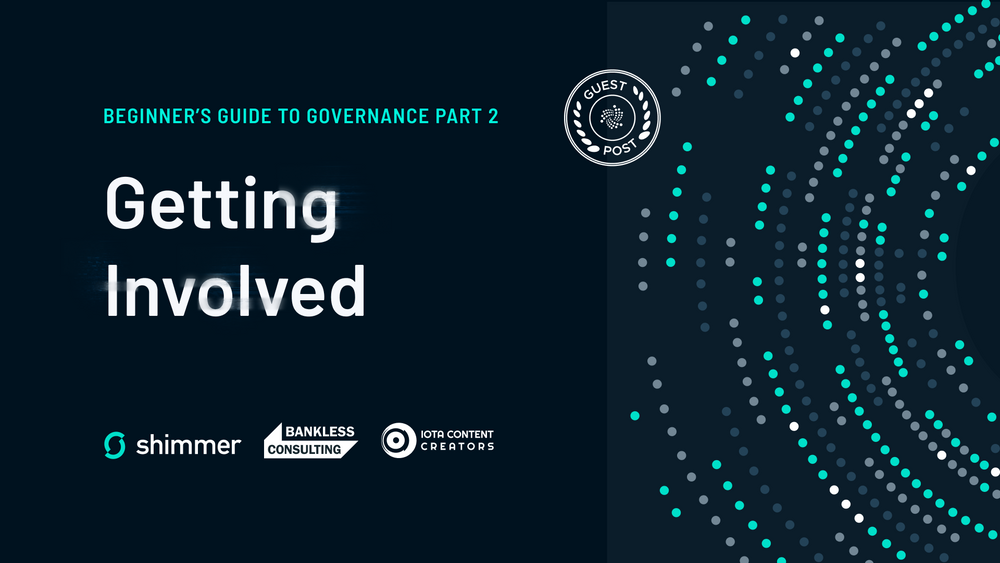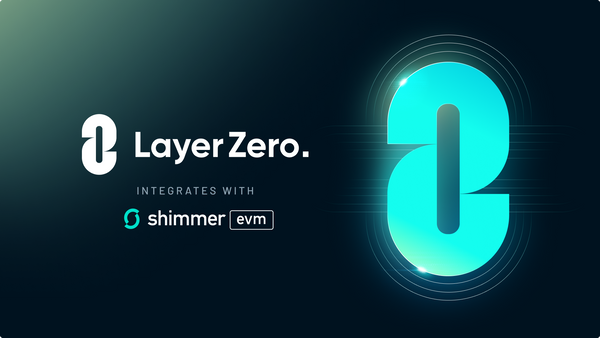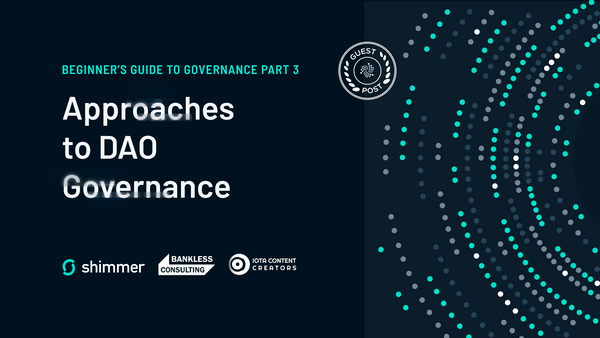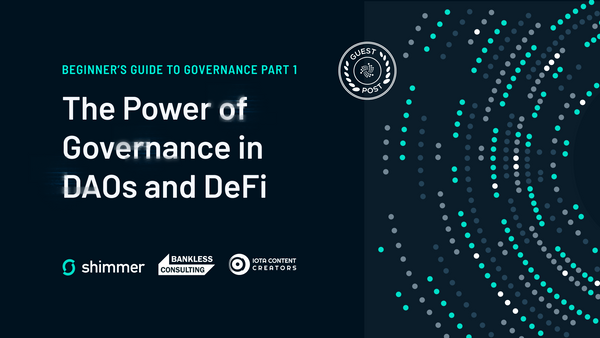Beginner’s Guide to Governance Part 2
Getting Involved
TL;DR:
Governance in five steps: Ideation, Proposal, Discussion, Voting, and Execution, plays a vital role in crypto. Engaging in discussions is key, and proposals undergo scrutiny before voting. Diverse voting methods exist, with on-chain voting being secure for critical decisions. Execution depends on developers and can involve smart contracts. Innovations like simplicity and delegation improve governance.
Governance involves five steps: Ideation, Proposal, Discussion, Voting, and Execution. For most participants, the first three phases are the most important as they provide the highest value (and most work!) to the community. When people are active and get involved in these stages, they are usually interested in voting as well, but if there is low interest in the proposal stage, even the discussion phase might not happen. So keep in mind that discussing in Discord or the Forum will likely be your best opportunity for participation in governance. Let’s discuss each step in detail.
Step 1: Ideation

Ideation involves brainstorming protocol improvements. Let’s consider the Mango Markets example outlined in the previous blog post: It’s clear that its price oracle needs improvements to prevent future hacks. But ideas for improvements don’t have to be technical: they can be related to business or marketing. In fact, it can be any idea related to the improvement of the protocol and is only limited by your imagination.
Ideation can occur on Discord or Telegram, at a conference, or in conversation with friends. It’s about brainstorming ways to build new projects or improve the protocol. By examining other protocols, you can learn from their successes or even their failures.
Ideation is heavily influenced by culture. Unlike many traditional corporations, the crypto space values input and idea-sharing, fostering creativity and inclusion.
Step 2: Proposal

This stage takes the original idea, refines it, and formats it based on the template provided by the protocol for presentation to the wider community.
Once an idea gains traction and support within a community, the next step is to organize and distill it into a proposal. This involves refining the idea by writing it down to solidify and summarize the discussions in the ideation phase. It takes time to write a good proposal and to organize thoughts into a format that can be easily presented in a complete yet succinct document. At the same time, it becomes easier to draft a proposal the more you’ve written. Every proposal is appreciated even if not approved because everyone can learn from it. Maybe the rest of the community thinks differently from you, but that knowledge can help guide you in crafting your next proposal.
A proposal could be about funding requests, marketing programs, product enhancements, forking projects from other protocols to yours, changes to the governance structure, etc. Keep in mind that any proposal will probably need to pass a security review before progressing to the next stage.
Here are our four tips for submitting a proposal:
- As mentioned, there are frequently specific templates you must use when submitting a proposal. So it’s a good idea to check the requirements and format first to prevent extra work when writing a proposal. In many cases, the template will make it easier for you to craft your proposal.
- Check the scope of proposals that the protocol can accept. Many protocols have a Foundation or other entity that functions like a core team that decides which aspects of the protocol can be changed by community vote. You may need to check that your proposal falls within that scope to prevent wasted time and energy.
- Verify if there’s a reputation requirement for proposal submission. Some DAOs require you to have a specific level of trust in the forum before you can offer a proposal: for example, by being a core contributor or having visited the forum for a predetermined length of time. In the case of IOTA, it’s enough to simply get involved in its Governance Forum. The more pages you visit and the more opinions you share, the more your reputation rises. Offering feedback and helping others to improve their proposals will help you reach the minimum required trust level for proposal submission.
- Be aware of any other requirements, like holding a minimum amount of tokens before submitting. If you don’t hold a minimum number of tokens, you may need to use a delegate to submit your proposal.
Step 3: Discussion

Now we can collaborate with the wider group to collect their opinions and assess the feasibility of the proposal. If you want to discuss your proposal with the rest of the community, it helps to keep a couple of recommendations in mind.
- Be responsive to comments and open to change. These protocols are decentralized and many community members are located in different countries. Others may have a different perspective, which can only strengthen your proposal. Also, if you take all of the different perspectives into consideration ahead of time, the voting phase will only be a formality since other community members have already shared their opinions and had valuable feedback incorporated.
- There may be specific restrictions placed on the discussion phase: consult the documentation first. Maybe discussion can only start on Mondays, or maybe it can only remain open for five days, no more, no less. Regardless of the specific requirements, it’s good practice to familiarize yourself with the process before submitting your proposal. This way you can ensure that you’re prepared to be responsive to community comments and questions during the discussion.
Step 4: Voting

Once the discussion is finished and the proposal has been modified to meet the needs of the community (if applicable), the proposal can proceed to the voting phase. In this phase, token holders and/or community members formally make their opinion of the proposal known to determine consensus.
There are many types of voting. The most common real-world example (in elections, for example) is one person, one vote. The analogous method in crypto or Web3 is one token, one vote; however, this gives a big advantage to those with deep pockets and might not be fair to those who are more involved in the protocol. Therefore, there are other voting methods to discuss, each with its own appropriate use case.
Quadratic Voting: In this mechanism, a person who has more tokens has more votes. However, the voting power doesn’t grow linearly but increasingly slowly as the number of tokens increases. So a person with one token may have one vote, but if they have 10 tokens they might only have five votes, 100 tokens, maybe seven votes, and so on. One downside to this voting scheme is that a whale could split its tokens among many different wallets to maximize its voting power. While this would likely be too time-consuming for most proposals, it could be employed when there is a specific proposal that might greatly benefit the token holder, so it’s still not perfect.
Time-Based Voting: In this voting mechanism, the longer a voter commits to holding their tokens for voting, the greater their voting influence becomes. This presents a couple of advantages over a traditional one-token one-vote mechanism: 1) it prevents someone with deep pockets from influencing the outcome of the vote by buying a large number of tokens to place a vote before selling directly after, and 2) it provides flexibility to voters by allowing them to change their minds during the voting phase.
Delegated Voting: Governance proposals can be complex. For instance, they might require extensive technical knowledge that the average token holder doesn’t have, or perhaps the token holder has limited free time or insufficient experience to make an informed decision. Delegated voting addresses these concerns by allowing token holders to entrust their voting power to another party. This voting proxy votes on the token holder’s behalf in governance matters. Token holders still retain possession of their tokens and can revoke the delegate’s right to vote on their behalf at any time. Delegates are incentivized to be transparent and accountable, leading to voting outcomes that are more informed and intentional.
On-Chain vs. Off-Chain Voting: On-chain voting refers to voting directly on the distributed blockchain network, with each vote recorded as a transaction on the blockchain, making it transparent, secure, auditable, and immutable. This approach is best suited for critical governance decisions like protocol upgrades, changes to consensus mechanisms, or changes to the network’s basic properties. Assuming that the network is sufficiently large and decentralized, on-chain voting ensures that the outcome of the vote can’t be controlled or influenced by a single actor or subset of the community.
Off-chain voting, meanwhile, involves conducting the voting process outside the blockchain network. Voting decisions are recorded and tabulated off-chain and only the final result is recorded on the blockchain. This reduces the burden on the network, improving scalability. It also offers more privacy, since the individual votes are not immortalized on the blockchain. Off-chain voting is appropriate for less critical decisions or for temperature checks that require less security and immutability than more critical decisions.
We recommend checking the specific voting procedure used by the protocol. There could be a multi-level voting implementation, as is the case with IOTA, where the proposal first needs to pass an off-chain voting phase in the forum before proceeding to the on-chain mechanism in the Firefly wallet. So it’s important to familiarize yourself with the process for the specific protocol you intend to improve with your proposal.
Step 5: Execution

When the voting period has ended and the will of the community is clear, the last step is to implement the changes.
This stage is usually dependent on protocol developers. Some networks may allow for automatic execution; in this case, the smart contracts have already been developed and are simply waiting for the voting outcome. This type of execution can only be accomplished with on-chain voting mechanisms. If the voting occurred off-chain, the execution may be delayed until the developers code the appropriate smart contract or protocol upgrade. It could also be the case that the funding is not yet available to allow for execution. In general, this stage is the one in which all of the hard work comes to fruition and the protocol is upgraded to match the will of the community.
In the next and final part of this introduction to DAO governance, we’ll explore a few popular protocols and their unique approaches to governance.
Introduction to Governance
Part 1: The Power of Governance in DAOs and DeFi
Part 2: Getting Involved
Part 3: Approaches to DAO Governance
Also in this series
Beginner's Guide to Crypto Wallets
Beginners Guide to DEX vs. CEX
Beginner's Guide to DeFi Lending & Borrowing
Beginner's Guide to Yield Farming



